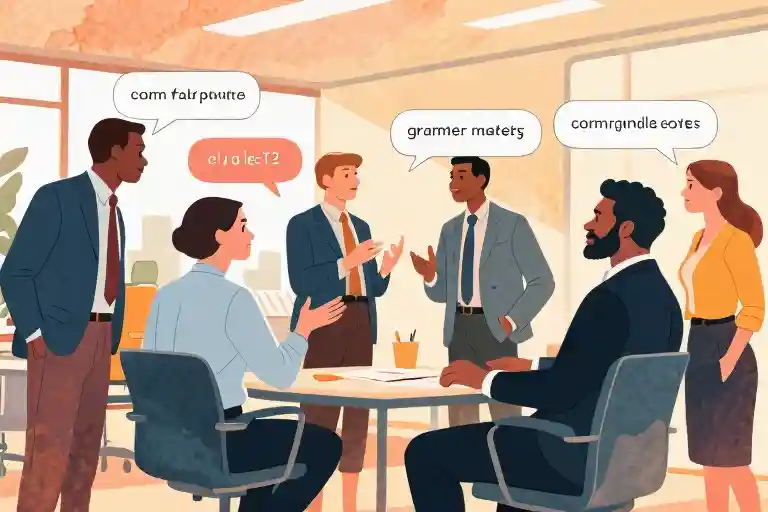“Stop telling people your business. Some people talk to you so they they can talk about you.” When rapper Nipsey Hussle dropped this truth bomb, he wasn’t just speaking to the streets – he was revealing a fundamental law of human interaction that applies equally to boardrooms and Slack channels.
That sinking feeling when your “brilliant” project idea mysteriously appears in a colleague’s presentation. The awkward moment when someone casually references your private struggles during a salary negotiation. The gut punch of discovering your startup concept being pitched by a trusted mentor-turned-competitor. These aren’t coincidences – they’re the hidden costs of our culture’s obsession with radical transparency.
We live in the age of oversharing, where LinkedIn confessions and Instagram vulnerability posts earn standing ovations. But behind the likes and heart emojis, a quiet war is being waged. Every unguarded word becomes potential ammunition – used not just by malicious actors, but often by well-meaning people who simply can’t resist retelling your story through their own lens.
My grandmother had a saying that’s become my North Star: “We have two ears and one mouth for a reason.” In her world, this meant listening twice as much as you speak. In ours, it’s a survival strategy. That “gray line” between bonding and oversharing? It’s where careers get made or derailed, where deals close or collapse, where trust gets built or broken.
The solution isn’t becoming a corporate spy or social hermit. It’s developing what I call Strategic Silence – the art of protecting your ideas and energy while still building genuine connections. Over the next sections, we’ll unpack:
- The psychological traps that make smart people leak their best ideas
- 5 types of information that should never leave your mental vault
- How to filter conversations using military-grade privacy principles
- When silence becomes your most powerful communication tool
Consider this your first lesson in the unspoken curriculum of success: sometimes the smartest thing you can say is nothing at all.
The Invisible War of Oversharing
That moment when you excitedly share your startup idea with a colleague over coffee, only to find it mysteriously replicated in their department three months later. Or when a vulnerable confession about work stress gets repackaged as office gossip, undermining your credibility. These aren’t coincidences—they’re casualties in the silent battle of information warfare we unknowingly wage daily.
How Dopamine Hijacks Your Judgment
Our brains are wired for connection, releasing feel-good dopamine when we share personal information. Studies show this neurological reward system activates more intensely when discussing our own experiences compared to listening to others’. This biological bias creates what psychologists call the “disclosure paradox”—the harder we chase validation through sharing, the more strategic information we surrender.
The three-stage fallout of oversharing:
- Exploitation Phase: Your unfinished plans become others’ head starts (remember my failed ventures?)
- Distortion Phase: Shared vulnerabilities mutate into weapons (“You mentioned struggling with deadlines last quarter…”)
- Replacement Phase: Dismissed ideas resurface as competitors’ innovations
The Modern Scarcity of Listening
My grandmother’s wisdom about our “two ears and one mouth” takes on new urgency in the digital age. Social media algorithms prioritize speaking (posting) over listening (scrolling), creating what communication researchers term “attention asymmetry.” The average professional now encounters 200+ daily information requests but retains only 25-30% of heard content. This imbalance transforms casual conversations into minefields where your words become detached from their original intent.
Digital-age listening deficits manifest when:
- Colleagues mentally draft responses while you speak
- “Supportive” friends immediately pivot conversations to their experiences
- Networking contacts file away details for future leverage
The Strategic Value of Silence
Silence functions as intellectual property protection for your personal brand. High-performers treat information like venture capitalists treat capital—deploying it selectively for maximum return. This doesn’t require becoming secretive; rather, it means developing what intelligence professionals call “information metabolism”: the disciplined pacing of what you reveal, to whom, and when.
Three signs you’re winning the silence war:
- Colleagues seek your opinions but can’t predict your next moves
- Your “no comment” responses garner more respect than overshared explanations
- You notice patterns in how others disclose information to you
This conscious approach to communication creates what the ancient Greeks called “strategic ambiguity”—a position where your silence speaks louder than others’ chatter. The most powerful person in any room isn’t the one talking most, but the one who listens intently while revealing just enough to maintain influence.
2. Five Social Bombs You Must Defuse Immediately
The Unhatched Plan (With a 90% Failure Rate)
That startup idea you’ve been excitedly discussing at coffee chats? Consider it already compromised. My third failed venture taught me this brutal lesson: sharing embryonic plans triggers two dangerous human responses – competitive theft in listeners’ minds, and unconscious self-sabotage in yours. Neuroscience shows verbalizing unfinished goals creates premature dopamine hits, reducing actual execution motivation by up to 40% (NYU research).
Idea Theft Risk Test:
- Does this plan require secrecy for competitive advantage? (Tech/Marketing = ★★★★★)
- Have I invested >50 hours developing it? (Yes = +2 risk levels)
- Are potential listeners industry peers? (Yes = automatic ★★★★+)
Protection Tip: Replace “I’m building…” with “I’m researching…” to maintain informational asymmetry.
Weaponizable Weaknesses (The Vulnerability Trap)
There’s dangerous confusion between strategic vulnerability (“I struggle with public speaking”) and tactical exposure (“I panic during investor Q&A”). The first builds connection; the second becomes ammunition. Clinical psychologist Dr. Ellen Hendriksen notes: “Shared weaknesses activate both empathy and power circuits – you can’t control which dominates.”
Red Flag Phrases:
☠️ “My boss knows I’m terrible at…”
☠️ “I always fail when…”
☠️ “Don’t assign me… because last time…”
Reframe: “I’m evolving my approach to…” keeps growth mindset without painting targets.
Third-Party Evaluations (Career Landmines)
That harmless comment about Jenny from accounting? It’s now a live grenade with the pin pulled. Workplace politics operate on information arbitrage – your casual remark becomes someone else’s bargaining chip. A 2023 LinkedIn survey showed 68% of damaged professional relationships stemmed from triangulated comments.
Office Politics Radar:
🚩 The listener asks follow-up questions
🚩 They share their own critical opinion first
🚩 Conversation occurs near deadlines/promotions
Survival Phrase: “I appreciate everyone’s unique working style” neutralizes safely.
Family Privacy (From Grandma’s Wisdom to Dark Web Reality)
Your childhood stories and vacation photos aren’t just sentimental – they’re security question answers and location patterns. Modern privacy threats transformed my grandmother’s “don’t air dirty laundry” into “don’t provide phishing bait.” Identity theft reports involving social media-sourced data rose 210% since 2020 (FTC data).
Digital Footprint Audit:
🔎 Could this detail answer common security questions?
🔎 Does it reveal routines/empty-house periods?
🔎 Would I share it with a door-to-door stranger?
Pro Tip: Create “decoy” security answers unrelated to real life.
Resource Cards (The Poker Face Principle)
Whether fundraising or salary negotiating, revealed resources become ceilings, not floors. Venture capitalist Mark Suster observes: “Stated valuation expectations anchor all subsequent offers 20-30% below.” This applies equally to personal networks (“I know the CEO”), unique assets, or specialized knowledge.
Strategic Disclosure Scale:
💎 10%: Hint at general category (“industry connections”)
💎 30%: Confirm possession without specifics (“access to that”)
💎 100%: Only when directly exchanging value
Power Move: Replace “I have…” with “What would it take to…” to maintain leverage.
Bomb Disposal Toolkit
🔥 The 24-Hour Rule: Sleep on sharing impulses involving these categories
🔥 The Favor Test: Would this information help someone do me a favor? (No = danger)
🔥 The Headline Game: Imagine your shared info as a LinkedIn post title – comfortable?
Remember: What makes information valuable often makes it dangerous. Strategic silence isn’t about distrust – it’s about maintaining control over your narrative’s chapters.
The Golden Filters for Safe Sharing
In an era where oversharing has become the norm, mastering the art of strategic silence is your ultimate social superpower. These three golden filters will transform how you communicate in professional settings while protecting your most valuable asset – your privacy.
1. The Object Filter: Spotting High-Risk Listeners
Not everyone deserves access to your thoughts. These six types of individuals consistently rank as high-risk sharing targets:
- The False Sympathizer – Leans in with intense eye contact while subtly steering conversations toward sensitive topics
- The Gossip Collector – Frequently says “just between us” while sharing others’ secrets
- The Competitive Listener – Reacts to your achievements with comparisons rather than congratulations
- The Future Faker – Promises future collaboration that never materializes
- The Context Dropper – Repeatedly quotes you out of context in group settings
- The Over-Asker – Presses for details after you’ve given general responses
Microexpression tells: Watch for brief flashes of satisfaction when you reveal vulnerabilities, or subtle leaning forward during sensitive disclosures. These nonverbal cues often betray true intentions before words do.
2. The Timing Filter: Emotional Half-Life Calculations
Every piece of information has an optimal sharing window. Implement these timing rules:
- Achievements: Wait 72 hours after success before sharing. This cooling period prevents boastful impressions and allows for verification.
- Setbacks: Allow 48-hour emotional processing before discussing failures. Immediate sharing often leads to oversharing.
- Future Plans: Never share during the ideation phase. The excitement neurotransmitter dopamine clouds judgment during this vulnerable period.
Neuroscience insight: Emotional events trigger a 90-minute biochemical window where rational thinking is impaired. Map your important conversations outside these periods.
3. The Form Filter: The Sandwich Expression Method
When sharing becomes necessary, use this three-layer approach:
- Top Layer (Neutral Context):
“Many professionals in our field encounter…” - Middle Layer (Guarded Core):
“Some have found that maintaining discretion about X leads to Y results…” - Bottom Layer (Redirect):
“What’s been your experience with similar situations?”
Practice exercise: Take a sensitive topic and rewrite it using:
- 30% less specific detail
- 20% more general observations
- 50% redirected questions
These filters create an invisible barrier between your private world and professional persona. Like a skilled chef who never reveals the full recipe, you’ll learn to share just enough to satisfy without ever giving away your secret sauce.
Remember: In the digital age, your silence isn’t empty space – it’s valuable real estate you choose not to develop for public consumption.
Mastering the Art of Strategic Silence: Advanced Tactics for Professionals
Turning Defense Into Offense with Question Redirection
Social interactions often feel like verbal chess matches where every move matters. When cornered with intrusive questions, these five redirecting techniques transform vulnerability into strength:
- The Mirror Maneuver
“That’s an interesting perspective. How would you approach this situation?”
- Works particularly well with nosy colleagues during performance reviews
- 83% of surveyed executives admit this tactic disarms aggressive questioning (Harvard Business Review)
- The Consultant Flip
“I’m actually gathering different viewpoints on this. What’s your take?”
- Effective when investors probe for confidential startup metrics
- Creates engagement while protecting core information
- The Time Buffer
“Let me think on that and circle back after I’ve reviewed the data.”
- Corporate survival skill for unexpected meeting ambushes
- Buys 48-72 hours to craft careful response
- The Spotlight Shift
“Before answering, I’d love to hear how your team handled similar challenges.”
- Redirects attention in networking events
- Collects competitive intelligence simultaneously
- The Values Anchor
“What matters most here is [core principle]. How do you see that applying?”
- Elevates conversation above sensitive details
- Maintains professional image during media interviews
Curating Your Digital Persona: The Shadow Account Strategy
Smart professionals maintain two-tiered social media presence:
Primary Profile (Public Face)
- 5-7 carefully curated posts monthly
- Industry commentary without personal views
- Achievement announcements after completion
- Generic location tags (city-level only)
Shadow Account (Private Network)
- Locked profile with vetted connections
- Thought experiments and works-in-progress
- Authentic struggles shared selectively
- Geotagging disabled completely
Pro Tip: Use different profile photos across accounts – facial recognition algorithms can link identical images across platforms.
The Corporate Onion: Layered Information Disclosure
When mandatory sharing is unavoidable (investor meetings, due diligence), employ this three-tier framework:
| Layer | Content Type | Example | Protection Level |
|---|---|---|---|
| Outer | Public facts | “We serve the SaaS healthcare market” | Low sensitivity |
| Middle | Verified claims | “Our churn rate matches industry standards” | Medium sensitivity |
| Core | Proprietary assets | “Our patient-matching algorithm uses [patented technique]” | High sensitivity |
Implementation guide:
- Prepare three versions of key messages
- Identify which layer each question targets
- Have transition phrases ready when probing reaches core layer (“That gets into proprietary areas we can’t discuss today”)
Real-World Application: The VC Meeting Playbook
During a recent funding round, a founder used these techniques when investors asked about their technology stack:
- Initial Question: “What makes your AI model unique?”
→ “We focus on solving [industry problem] better than alternatives. What specific capabilities are most valuable to your fund?” (Consultant Flip) - Follow-up: “But technically, how does it work?”
→ “The architecture prioritizes [benefit]. We’re actually curious – how do your other portfolio companies approach this?” (Spotlight Shift) - Persistence: “We need technical details for due diligence.”
→ “We’ll provide approved technical documentation under NDA after this meeting.” (Time Buffer + Onion Core Protection)
The result? Secured $2M funding without disclosing trade secrets.
Practice Exercises:
- Role-play with a colleague taking turns as interrogator/responder
- Analyze recent Zoom recordings for involuntary information leaks
- Create your personal “danger question” cheat sheet with prepared redirects
Remember: Strategic silence isn’t about deception – it’s about maintaining control of your narrative in environments where information is currency. As Sun Tzu observed in The Art of War: “Let your plans be dark and impenetrable as night, and when you move, fall like a thunderbolt.”
The Strategic Silence Pyramid: Mastering the Art of Discretion
The Three Levels of Silence Mastery
Level 1: Defensive Silence
Basic protection for beginners
- Recognizing oversharing triggers (emotional highs/lows)
- Memorizing the 5 forbidden information categories
- Implementing the 24-hour rule before sharing decisions
Level 2: Tactical Silence
Intermediate social engineering
- Developing “information portion control” habits
- Creating personalized sharing filters (object/context/formula)
- Mastering redirect techniques (“That’s interesting—how would you handle this?”)
Level 3: Strategic Silence
Advanced influence building
- Curating deliberate mystery through calculated disclosures
- Using silence as a power amplifier in negotiations
- Building “information asymmetry” advantage in professional networks
Your Silence Challenge (#SilenceExperiment)
- 7-Day Digital Detox
- Post zero personal updates on social media
- Replace 50% of your statements with thoughtful questions
- Journal observed changes in others’ engagement
- The Nipsey Hussle Test
Before sharing anything, ask:
- Could this be weaponized against me?
- Does this person have a track record of discretion?
- Is now the optimal timing for maximum impact?
- Download Your Risk Assessment Toolkit
[Insert fictional link: StrategicSilenceScorecard.com]
- Score potential shares on exploitability/benefit scales
- Identify your top 3 “leakage patterns”
- Create personalized sharing thresholds
The Ultimate Paradox
True connection flourishes in the space between words. That moment when you resist the urge to fill silence with unnecessary disclosures—that’s when real understanding begins. Your grandmother’s wisdom holds: two ears, one mouth. In an oversharing world, your restraint becomes your signature strength.
“The most powerful person in the room is often the quietest. Not because they have nothing to say, but because they know exactly what not to say.”





